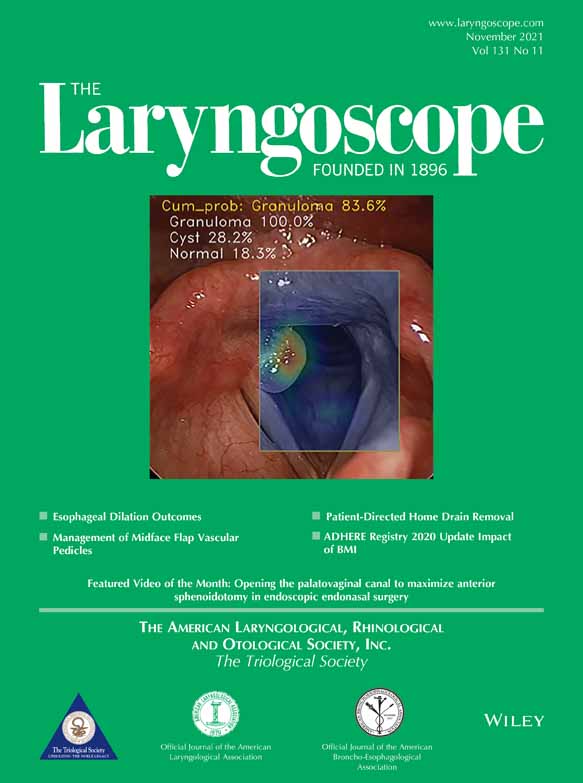Transarterial Embolization for Bleeding in Patients with Head and Neck Cancer: Who Benefits?
Editor's Note: This Manuscript was accepted for publication on April 28, 2021.
This study has obtained IRB approval from our institution and the need for informed consent was waived.
The authors have no funding, financial relationships, or conflicts of interest to disclose.
Abstract
Objectives/Hypothesis
The present study aimed to investigate the efficacy of transarterial embolization (TAE) for bleeding in patients with head and neck cancer (HNC) and to evaluate the prognostic factors after TAE.
Study design
Outcome study.
Methods
This retrospective study included 31 consecutive patients (27 men and 4 women; median age, 61 years) who presented uncontrollable hemorrhage associated with HNC and underwent emergency TAE at our institution during a 10-year period (January 2011–December 2020). This corresponded to 40 TAE procedures, including 27 cases with an unstable status (circulatory and/or respiratory insufficiency) and 10 cases with carotid blowout syndrome. The technical success rate and adverse events were analyzed on a per-procedure basis. The rebleeding and overall survival (OS) rates were analyzed on a per-patient basis, and the factors related to OS were evaluated.
Results
The technical success rate was 100%. As an adverse event, cerebral infarction was found in three cases with carotid blowout syndrome. The rebleeding rate at 30 days after TAE and in the follow-up period (range, 9–3,004 days) was 17.2% and 35.5%, respectively. The median survival time was 263 days (95% confidence interval: 124.0–402.0 days). In the log-rank test, complete remission (CR) of the primary cancer at the time of the first TAE was identified as a significant influencing factor of survival.
Conclusion
TAE is effective for the treatment of hemorrhage associated with HNC even in patients with an unstable status. Patients with CR can gain a long life span.
Level of Evidence
4 Laryngoscope, 131:E2777–E2783, 2021




